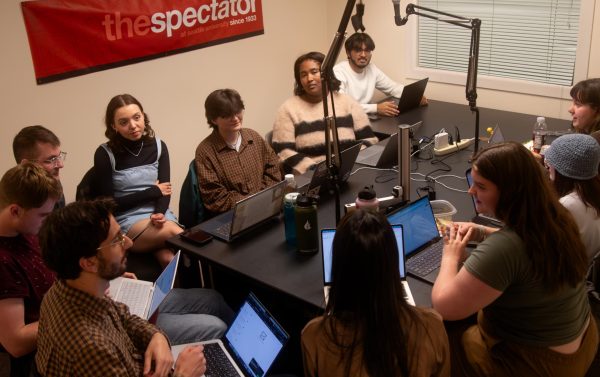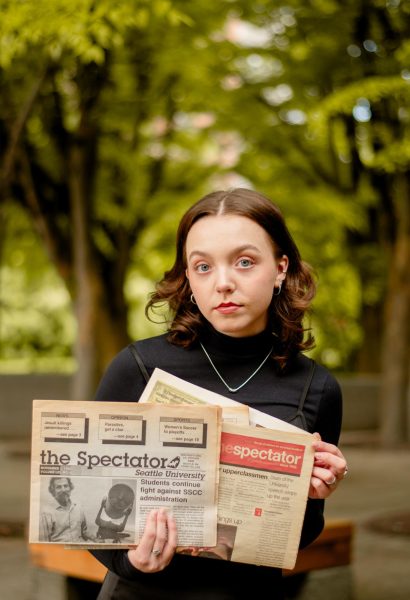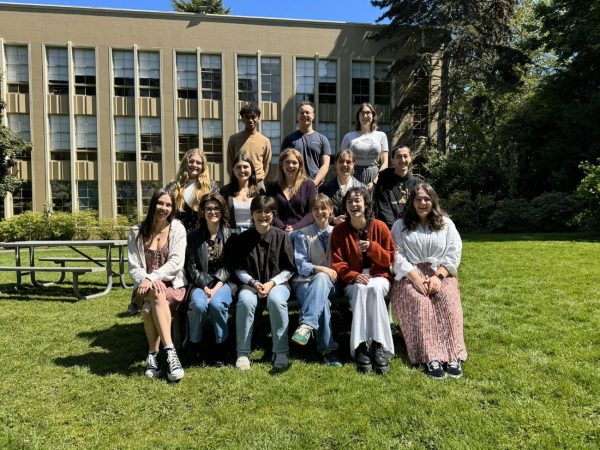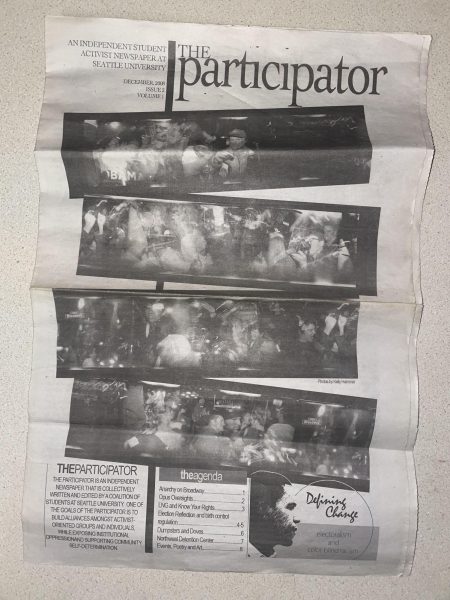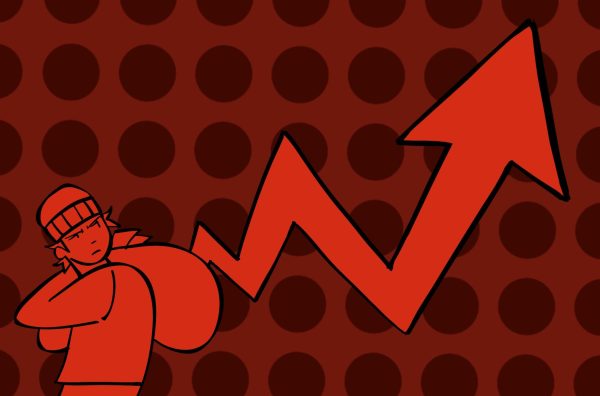Seattle Students Face Uneasy Climate Moving Into Politically Volatile Season

Seattle law enforcement and private security organizations are facing a fall season likely to include additional political demonstrations moving into the November election. Alleged police misconduct during summer protests have created concerns about the safety of youth and young adults when demonstrating, and created a wider conversation about racial justice in Seattle.
In the wake of the death of George Floyd at the hands of a Minneapolis police officer, protests erupted in Seattle throughout the summer. On May 30th, King County resident Mando Avery was at a Black Lives Matter protest with his seven year old son when he was pepper sprayed. “I looked down and that’s when I felt it in my eyes. But I could see it all over my son,” Avery told KUOW. Videos of the child screaming as the result of a direct encounter with the Oleoresin Capsicum, or OC spray, were widely circulated online.
OC spray “incapacitates subjects by inducing an almost immediate burning sensation” according to the National Institute of Justice Technology Assessment. The child can be seen experiencing this sensation while bystanders attempt to wash his eyes with milk. The incident drew thousands of complaints to Seattle’s Office of Police Accountability.
The incident provoked a strong reaction, and has highlighted broader concern about the safety of students of color when protesting.
“In terms of attending demonstrations, I think there’s the threat of danger no matter what the climate of the country. With all of the weaponry the police are using (pepper spray, rubber bullets, rumors or heat guns) it’s hard not to be scared,” said Black Student Union Vice President Tatianah Summers in a written statement to The Spectator.
“The nice thing about demonstrations is that they don’t necessarily need to be in person. There are so many ways to protest and I’m confident in not only BSU but a large population of this country. Safety is something we as a black population have lacked for a long time and now as good of a time as any to finally obtain this basic human right,” wrote Summers.
Seattle U Public Safety Executive Director Craig Birklid was asked about how Public safety addresses student demonstrations.
“We are available to assist in the planning of those demonstrations if there’s security or safety issues that people are concerned about. If there’s a presence that’s requested for either uniformed or un-uniformed presence, we can assist there,” said Birklid.
On June 10th, President Fr. Stephen Sundborg, S.J. addressed concerns regarding the Seattle Police Department’s presence in the fitness center parking lot.
“When the issue was brought to my attention, I felt it was important that we take action to stop it and ask SPD to discontinue using the parking lot or any part of campus,” wrote Fr. Sundborg.
Birklid articulated Seattle U Public Safety’s relationship with the SPD.
“We are private property, so we are not part of the Seattle Police Department’s regular patrol plan,” said Birklid. When asked about how Public Safety would respond to a complaint against an officer, Birklid referred to Seattle U’s Department of Human Resources.
“If it was a conduct related issue, that would typically go through Human Resources, and be reviewed by Public Safety and Human Resources,” said Birklid.
The Office of Police Accountability report on the incident did not conclude that the SPD violated any policies. “OPA recommends that this allegation be Not Sustained – Lawful and Proper,” reads the official document.
The Spectator spoke with Director of the Seattle Office of Police Accountability Andrew Myerberg about the safety of young people while engaged in protest.
The OPA released a statement on June 1st in the wake of BLM protests pledging support for “equitable policing across the nation.” Myerberg was asked whether the ruling affirming the legality of the officer’s conduct in the Avery case was consistent with the Office’s support of “equitable policing.”
“I don’t necessarily view them as inconsistent. I think we can wholeheartedly support racial equity and the changing of systems while understanding that there are currently systems in place and policies that govern the actions of officers, and those aren’t mutually exclusive,” said Myerberg.
“Our commitment is both to fairly uphold that law and policy, but at the same time advocating for changes in upcoming law and policy,” he continued.
“The SPD’s policies don’t differentiate between gender or race or age, so the general protest demonstration management policies that govern all protests would also apply to college students,” said Myerberg.
When asked about policy changes resulting from the Avery case, Myerberg pointed toward a recent list of recommendations the OPA created following the summer demonstrations.
“There are deliberations now on modifications to the existing policies that govern the response to protests,” said Myerberg.
“Among those will be modifications to the use of all less lethal tools including OC spray, and blast balls. So I can’t tell you with certainty what the policy will look like in November, but I do think that it’s gonna be different than it was when the protests occurred this summer,” said Myerberg.
The Seattle City Council has voted to, over Mayor Durkan’s veto power, sustain a $3 million dollar cut to the SPD’s $409 million dollar budget, which will entail cuts to officer staff and salaries. While the cut will not substantially change the size of the SPD’s budget, in a public statement following the cuts City Council President Lorena González touted the changes as a part of a broader movement to make Seattle policing more equitable.
“It is imperative that our budget makes meaningful community investments to build wealth and security in BIPOC communities,” said González.
Myerberg was asked whether he views the cuts as a step toward more equitable policing.
“It depends how it’s done, it depends on whether the process creates mechanisms that actually do create change as opposed to just creating more bureaucracy or systems that create more inequity,” said Myerberg.
Myerberg continued on to talk about the need for institutional accountability. “From my perspective, I do think it could be a good thing. Hopefully that change is created not just with some voices but a lot of voices,” said Myerberg.
Activist organizations like Decriminalize Seattle have lobbied for a community-oriented public safety model. They propose appropriating parts of the SPD budget for this goal. “Reallocate those funds to community led health and safety systems,” Decriminalize Seattle’s website states.
When asked about institutional changes needed to create greater racial equity in law enforcement in Seattle, Myerberg spoke about the broader institutional changes he views as necessary to achieve such goals.
“Police are just the ‘tip of the spear.’ The police are enforcing laws. Some of those laws have to change, I think that if you increase funding in schools and housing then potentially there is less crime for police to respond to. Can we rethink crisis calls and create an entity that responds to those crisis calls? Yes we can hopefully that’s something they’ll think about doing,” said Myerberg. “I’m optimistic.”
Seattle sits in the middle of a debate around public security, social justice, and law that will likely have an impact on student demonstration this November.






